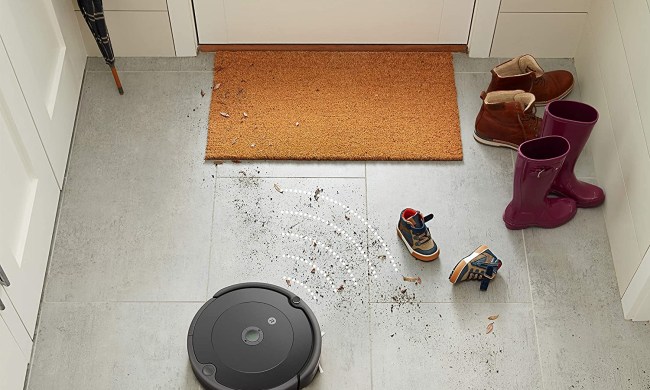Not to be confused with class ceilings, glass roofs are nothing new. We’ve known about conservatories since we were kids playing Clue, and greenhouses, porches, and foyers with translucent tops are fairly common. The problem with all that glass is that it makes your home one with the weather. Sunny summer days can make the room boil, while deep winter days can make the place freeze.
But Sweden’s SolTech Energy wants to use the sun to heat your home, even here in the cloudy Pacific Northwest. Unlike traditional roof shingles, made of cement or aphalt, SolTech’s glass tiles let the sun shine through. An absorption fabric underneath capture the sun’s rays, while beams form a columned area where the air warms and circulates. The energy generated by this process works with the house’s heating system, whether its air-based or water-based, according to SolTech. The glass tiles may not aesthetically please everyone, but we think they look kind of like something you’d find on a gingerbread house. The black nylon beneath the tiles means any nearby birds or passing drones can’t spy on you, either.
In the summer, a convector transfers the heat to a ground heating system, which is fluid-based and can help cool the house. If you’re not keen on the glass roof idea, SolTech also has glass wall panels that work in a similar manner.

While the glass tiles are currently available, there’s another glass-roof solution that hasn’t yet made its debut. Oxford Photovoltaics, an offshoot of Oxford University, wants to change the way the world uses photovoltaics. “What we say here is rather than attach [solar] photovoltaics to the building, why not make the building the photovoltaics?” Kevin Arthur, the company’s CEO, told the Guardian. “If you decide to build a building out of glass, then you’ve already decided to pay for the glass. If you add this, you’re adding a very small extra cost. [The solar cell treatment] costs no more than 10% of the cost of the facade.”
The company can dye the glass in a variety of shades, though blue is one of the least efficient hues. While the Oxford PV team wants to make this technology commercially available, it will likely be used mostly for buildings. Still, if the process proves as relatively inexpensive as they say and makes homes greener by helping generate energy, who’s to say we won’t be seeing green-tinted, PV-glass roofs some day?
Should make for some interesting Google Earth photos in the future.


